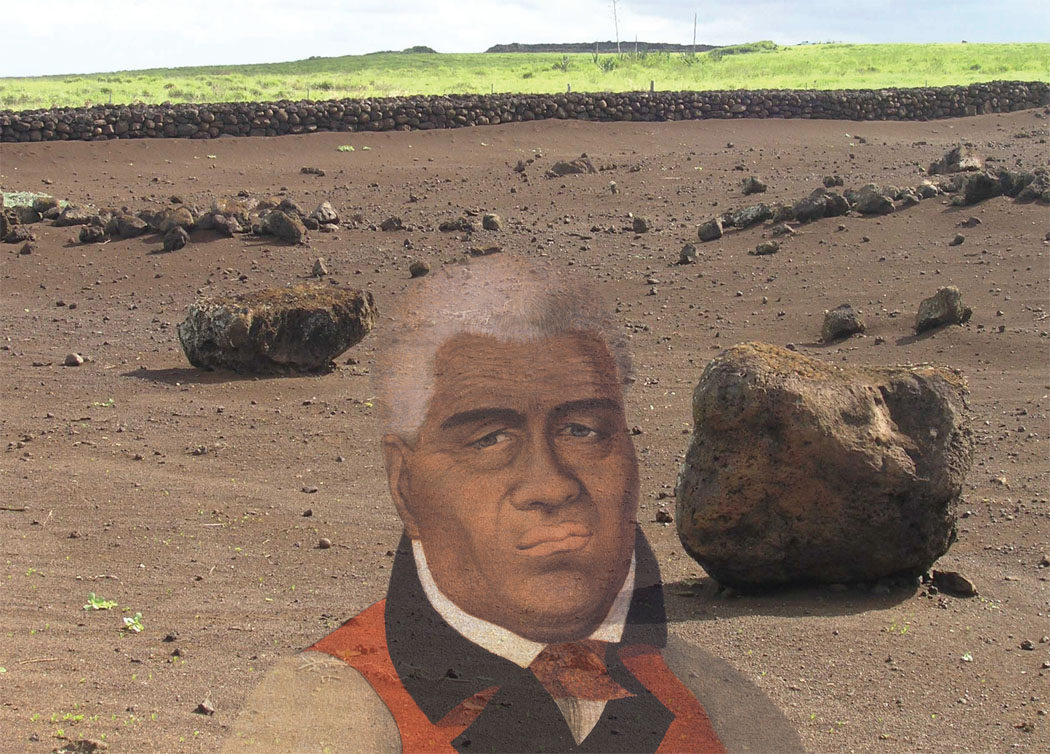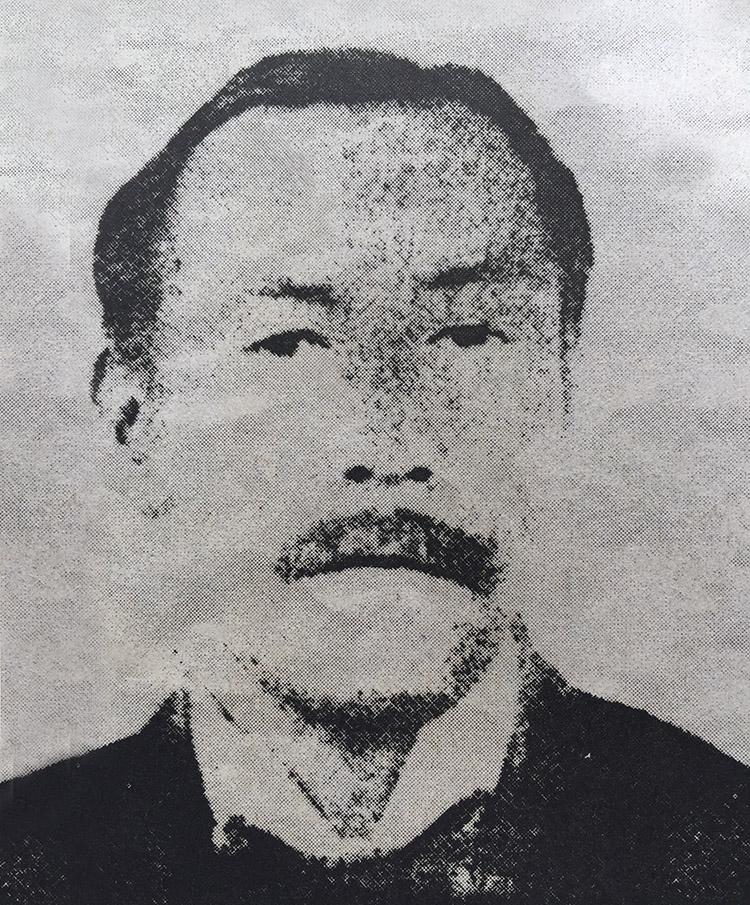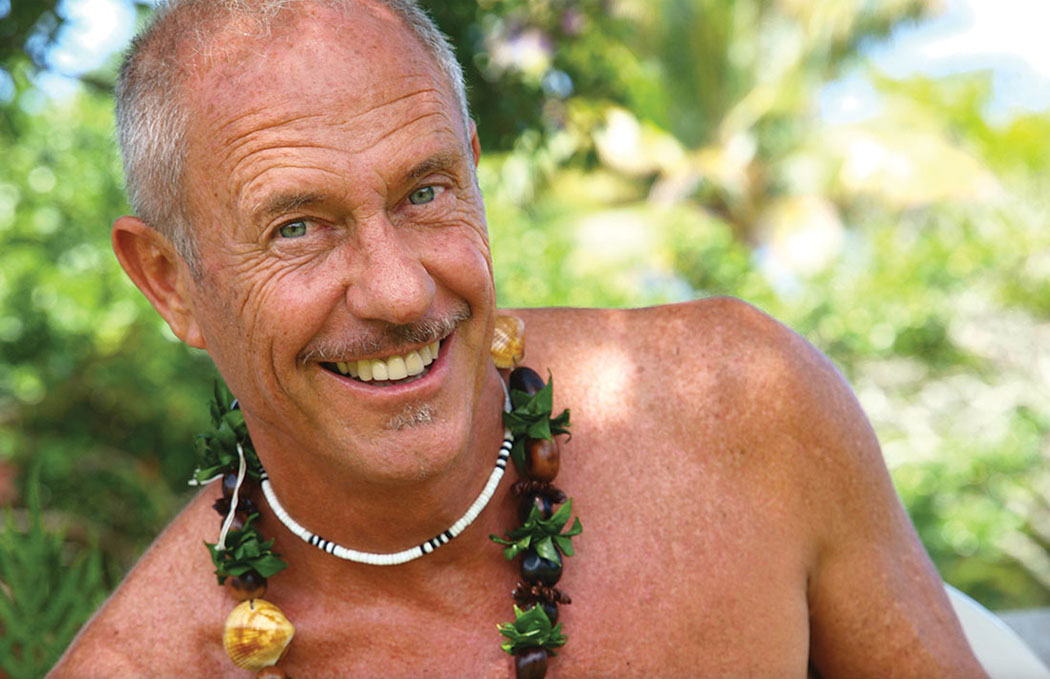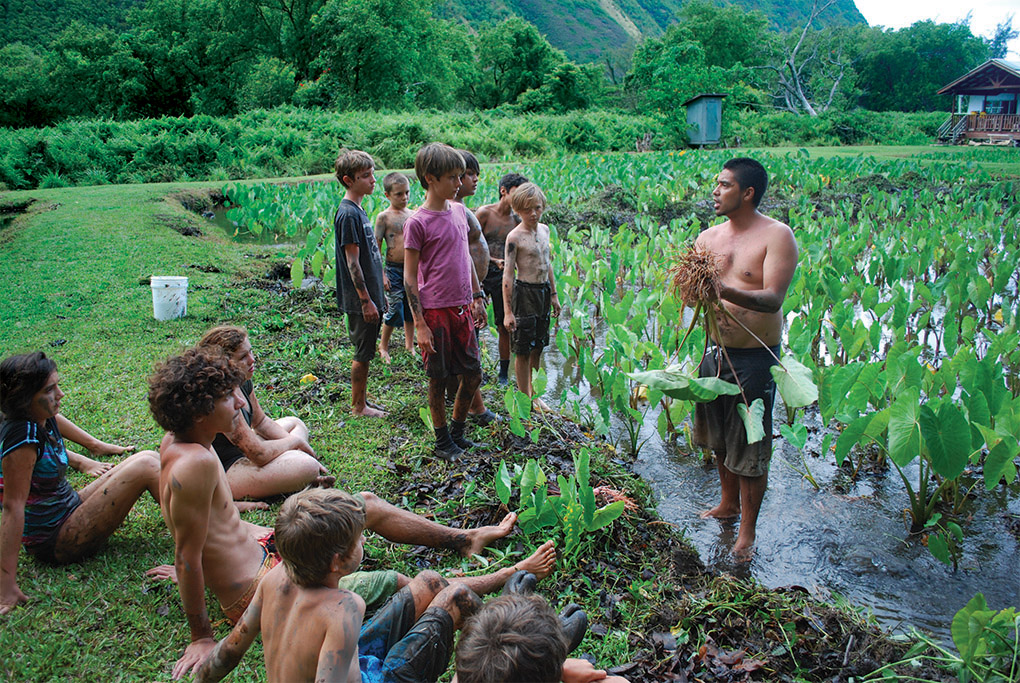
The Hawaiian Cultural Center of Hāmākua

By Mālielani Larish
On a balmy Thursday afternoon, the sounds of Hawaiian oli (chant) break the calm of downtown Honoka‘a. A student from Lanakila Mangauil’s Papa Oli class stands in the doorway of the Hawaiian Cultural Center of Hāmākua, embodying the oli with such power that listeners are absorbed in the experience. Punctuated by quick lilts of the voice called he‘u (deep throated), the poetry issuing from deep within his na‘au (gut) resonates beyond the walls of the room. Just as oli cover a rich library of topics, the Hawaiian Cultural Center of Hāmākua offers an amazing array of opportunities for the community to deepen their connection to Hawaiian culture and each other. Just as walls cannot contain the power of oli, the impacts of the center extend far beyond the town of Honoka‘a.
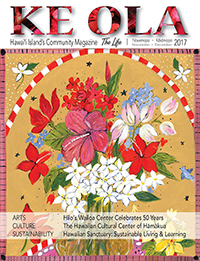
Sparked by Lanakila’s passion for Hawaiian culture and his commitment to enriching the town of his birthplace, the Honoka‘a community rallied to help him create the Hawaiian Cultural Center of Hāmākua, which will celebrate its two-year anniversary this winter. Comprised of two side-by-side halls in the historic Botelho Building, the center offers ongoing community classes, special workshops and summer programs, presentations for school and tour groups, community events, cultural exchange programs, and a mini-museum.
Lanakila is the dynamic force behind the center; he welcomes visitors and locals alike to the center with fresh energy and a smile. An enthusiastic leader with a penchant for innovation, he has taught Hawaiian language and culture in the community for over a decade.
Nedi McKnight and her husband have taken classes and workshops at the center since its inception in 2015. “It’s just added so much to our lives…It’s so cool to see people we know blossoming there,” she says.
The youngest of six, Lanakila grew up playing in the forests of Āhualoa. Born to a Scottish/Irish mother and Filipino/Hawaiian father, Lanakila describes himself as a “product of the Hawaiian Renaissance movement.” Pivotal to his upbringing were the summers he spent at Kukulukumuhana, a Hawaiian immersion camp held out of the home of Uncle Kia Fronda in Waipi‘o Valley. During these summers, he met influential teachers like “Aunty Ku” and “Uncle Nalei” Kahakalau, who would go on to launch the Hawaiian charter school movement.
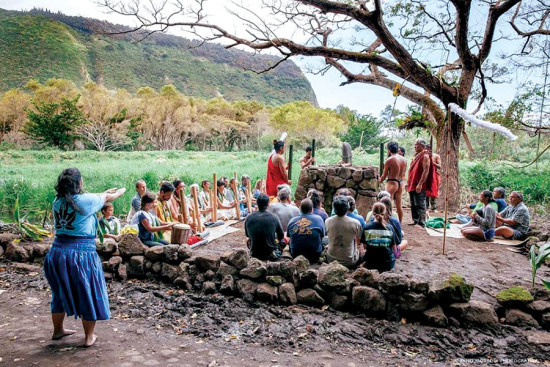
Starting in ninth grade, Lanakila enrolled in Kanu O Ka ‘Āina in Waimea, the first Hawaiian charter school to open in the state. This foundational experience enabled Lanakila to grow strong in his understanding of Hawaiian language, culture, and traditions. He also met Aunty Pua Case at this time and became a haumana (student) of her hula hālau (hula school) in Waimea.
“Being able to be in a Hawaiian culture-based education, it just opened my eyes to so many other different things,” Lanakila says. After graduating from high school, Lanakila enrolled in college. “It didn’t work for me,” he says. “It was like going back in a box and I didn’t work in a box.”
At 19, Lanakila was hired as the Hawaiian Studies teacher for grades K–6 in Honoka‘a. After five years, his teaching responsibilities expanded to include middle and high school students, and he elected to teach Hawaiian language and philosophy courses for adults at the North Hawai‘i Education and Research Center (NHERC).
“The whole essence for me was to ground myself in my hometown, my birthplace, and then everything that helped to enrich me, to try to give that to enrich my community,” Lanakila says.
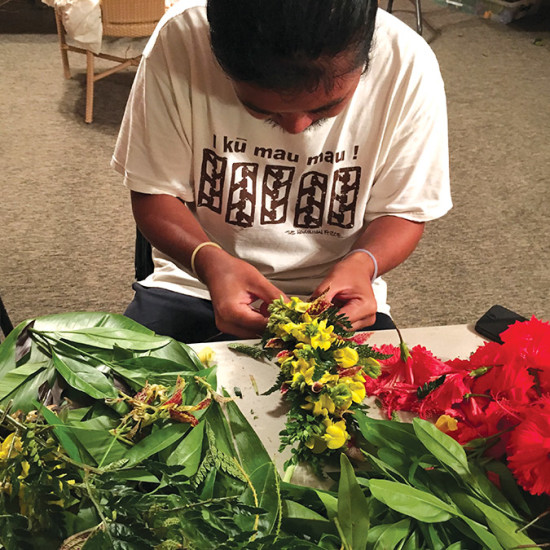
In Lanakila’s eyes, Honoka‘a needs nurturing; this rural town with a population of 2,258 has the highest rate for domestic violence, teen pregnancy, and meth use per capita.
Encouraged by his students and determined to create something that would stay in Honoka‘a to serve the community, Lanakila created a Facebook post. It read: “If anyone is interested in starting a Hawaiian Cultural Center, let’s meet up!” The resounding answer from community members? “Let’s do it!”
Through a Kickstarter campaign and the help of some generous last-minute donors, the Hawaiian Cultural Center of Hāmākua hit its funding goal of $20,000. In November of 2015, the center officially held its first hula and language classes in a small space affectionately known as “the closet.”
Not long after, Lanakila received a call from a friend who offered him a much larger place to rent. Lanakila excitedly said yes, and moved into the space that the center currently occupies in December of 2016. On the eve of the center’s one year anniversary, the adjoining hall opened up and the center doubled in size.
First and foremost, the center offers regular Community Hula, Hawaiian Language, and Papa Oli (chanting) classes. Dancers in the Community Hula classes create theatrical presentations that incorporate mele (song), hana no‘eau (art), mo‘olelo (story), and hula and are intended for those who cannot commit to a hālau. In addition, Kumu Hula Punahele Andrade teaches his keiki wahine hula classes at the center.
Lanakila strives to attract many different cultural practitioners to the center. Jani Fisher hosts a monthly kapa making, dying, and cultivating workshop and Shaftton Kuakahi Kaupu recently taught an eight-week Hawaiian language course at the center. People come from as far as O‘ahu to attend the workshops.
Lanakila recently invited artists to the center for a Pāheona Ho‘omāhele (artisan’s salon), shared the legend of goddess Lā‘ieikawai with the audience, and encouraged the artists to create works of art to accompany a dramatic interpretation of the legend.
In the spirit of promoting health for the community, the center also hosts weekly Yoga, Zumba, and Qi Gong classes, and a regular workshop on financial management.
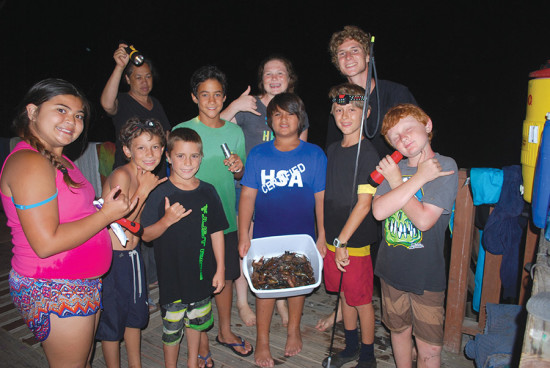
The center engages youth through after-school programs, home school programs, and summer intensives. This past summer, forty kids attending the Hana Ku‘una Hawaiian art camp transformed the center into a whirlwind of activity. After a week of stripping bark, concocting dyes, drilling kukui, and making feather leis, each student graduated with a set of Hawaiian arts and crafts.
The center hosted two Hawaiian cultural immersion summer camps in Waipi‘o, complete with all the activities that inspired Lanakila in his boyhood years: fishing, prawning, working the lo‘i (taro patches), learning chants and songs, and hiking to visit significant landmarks in the valley. “It was awesome,” Lanakila says.
Lanakila’s students are grateful for his teachings. Kayla Sinotte, a garden teacher at Kohala Elementary School, attended a course on Hawaiian agriculture that Lanakila taught in 2014. “It was the best professional development that I could have done as a garden teacher in Hawai‘i,” she says, and recommends it to others.
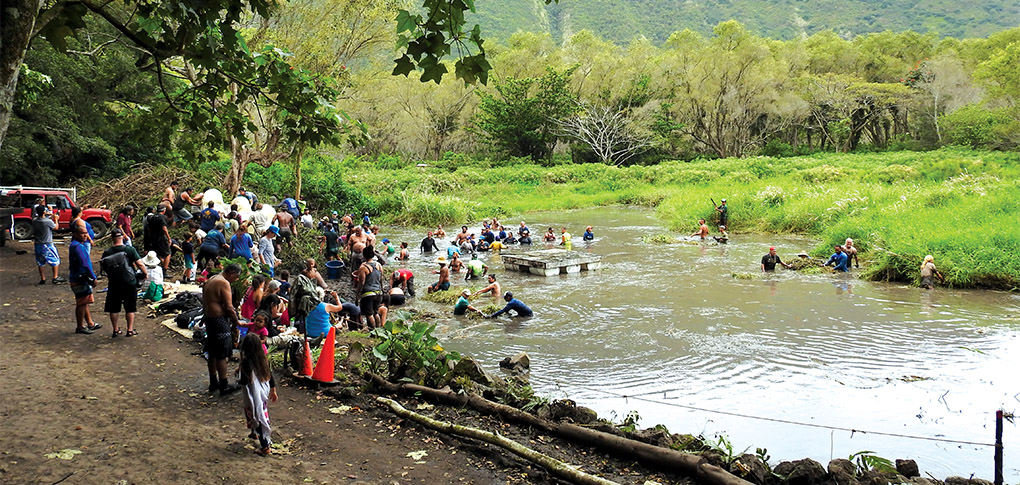
Reaching Beyond Honoka’a
Visitors who descend down into Waipi‘o Valley and turn towards the beach are met by a gem on the left-hand side of the road: Lālākea Fishpond. For 2000 years, the 15-acre fishpond provided the valley with a reliable supply of saltwater fish. After the devastating 1946 tsunami, the damaged pond developed a thick mantle of jungle that hid it from the public’s eye. Partnering with Kenrock Higa, the landowner and descendant of the original caretakers of this ancient pond, Lanakila helped organize the rebirth and restoration of Lālākea. In April of 2017, the effort kicked off with 200 volunteers jumping into the mud to remove the overgrowth.
Prior to this restoration work-party, Lanakila and the community built and consecrated the Kuahu a Kane altar and conducted a rebirthing ceremony for the fishpond. Full restoration of Lālākea will reveal its three sections: a spring-fed pond, a kalo (taro) section fed by the Wailoa River, and a loko pu‘uone section that ebbs and flows with the ocean tide.
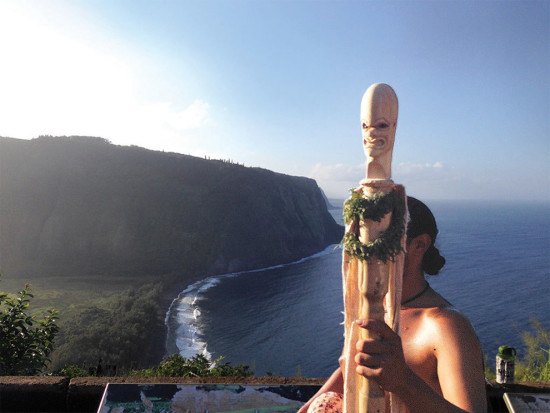
This November will mark the four-year anniversary of the Aha Pule ‘Āina Holo, a ceremonial prayer in the form of an island-encircling relay run, to coincide with the opening of the Makahiki season. The chiefs and kāhuna (priests) of ancient Hawai‘i walked around the island in a clockwise direction before the start of the Makahiki season, a time of games, feasting, and spiritual renewal, in order to cleanse the land and perform other duties. Today, teams of runners complete specific legs of the relay, passing off the Lono staff from one team to another at pre-determined meeting points. The stretch of relay from Miloli‘i to Napo‘opo‘o is completed with canoes. Lanakila was inspired to initiate this run after working with the Pit River Nation of Northern California, who use long-distance running to unite the community and spread the message of the sacredness of all life. Some of Lanakila’s Japanese students were so enthused by the idea that they organized and hosted a four-day ceremonial run around Mt. Fuji this past March, an event that Hawai‘i delegates attended.
In the future, Lanakila hopes to keep the center’s exhibit hall more actively open and to attract more groups to the center. Several school groups have already visited the center, and Lanakila enjoys leading them through the exhibits, sharing cultural information and tips about Waipi‘o Valley, and engaging everyone in an arts and crafts project.
“It’s been fun,” Lanakila says as he weaves through the center’s exhibits. Bright kapa cloth, created by Lanakila’s sixth grade students, hang from the vaulted ceiling. You can hear the powerful chanting of two young hula students coming from Kumu Hula Punahele Andrade’s keiki wahine hula class next door. The gifts of Lanakila’s vision fill the Hawaiian Cultural Center of Hāmākua, a hub for the perpetuation of Hawaiian culture and community wellbeing. ❖
For more information about the Hawaiian Cultural Center of Hāmākua: hccoh.org and www.facebook.com/HCCOH/.
